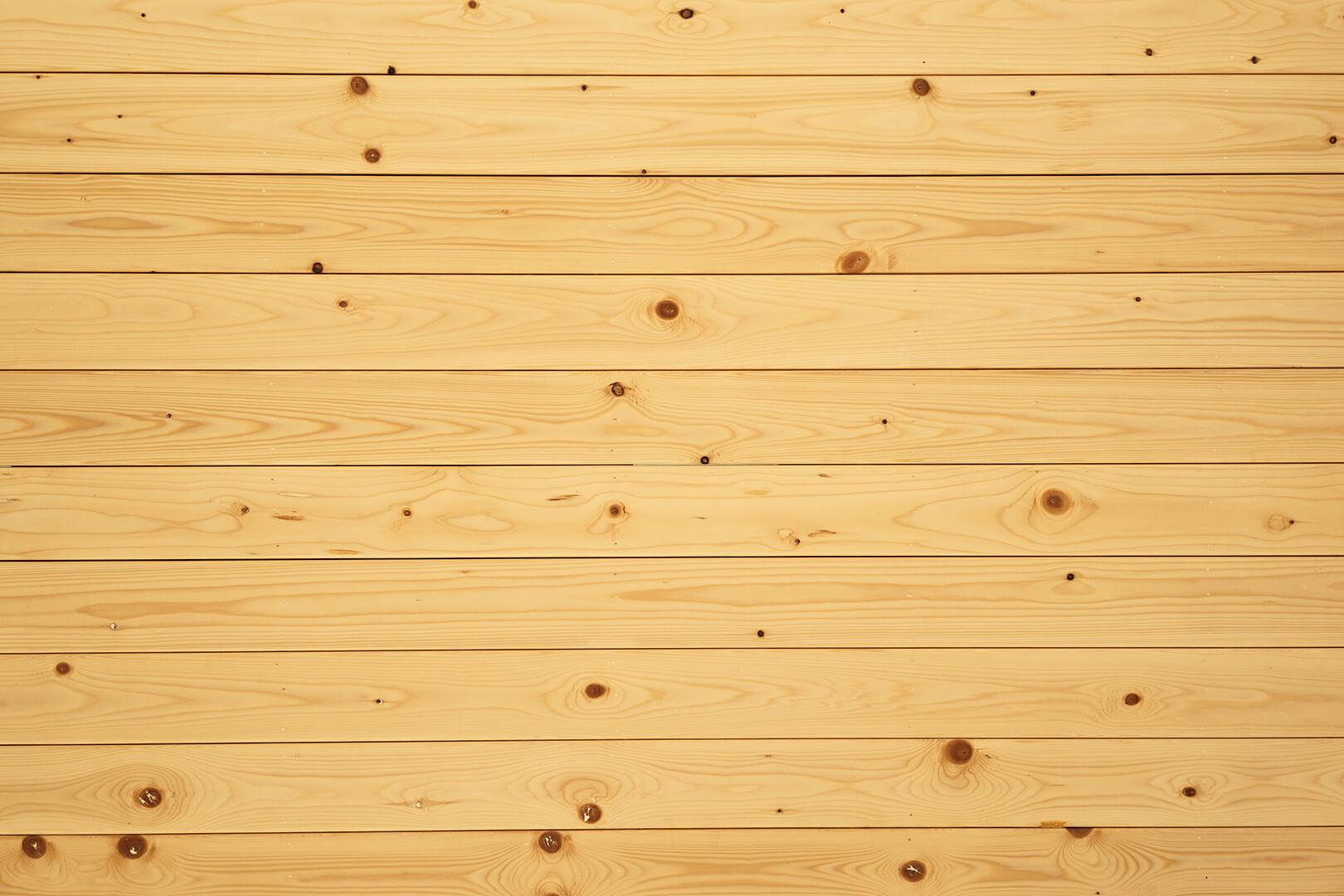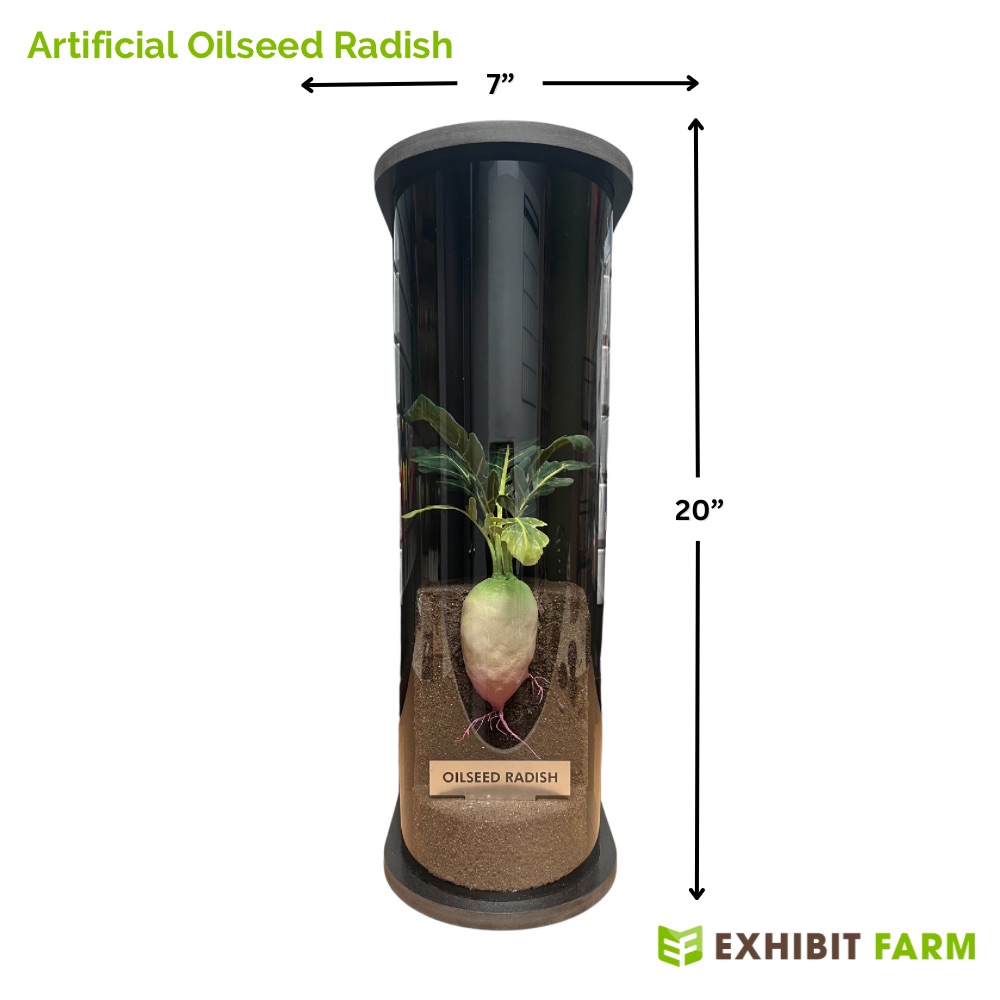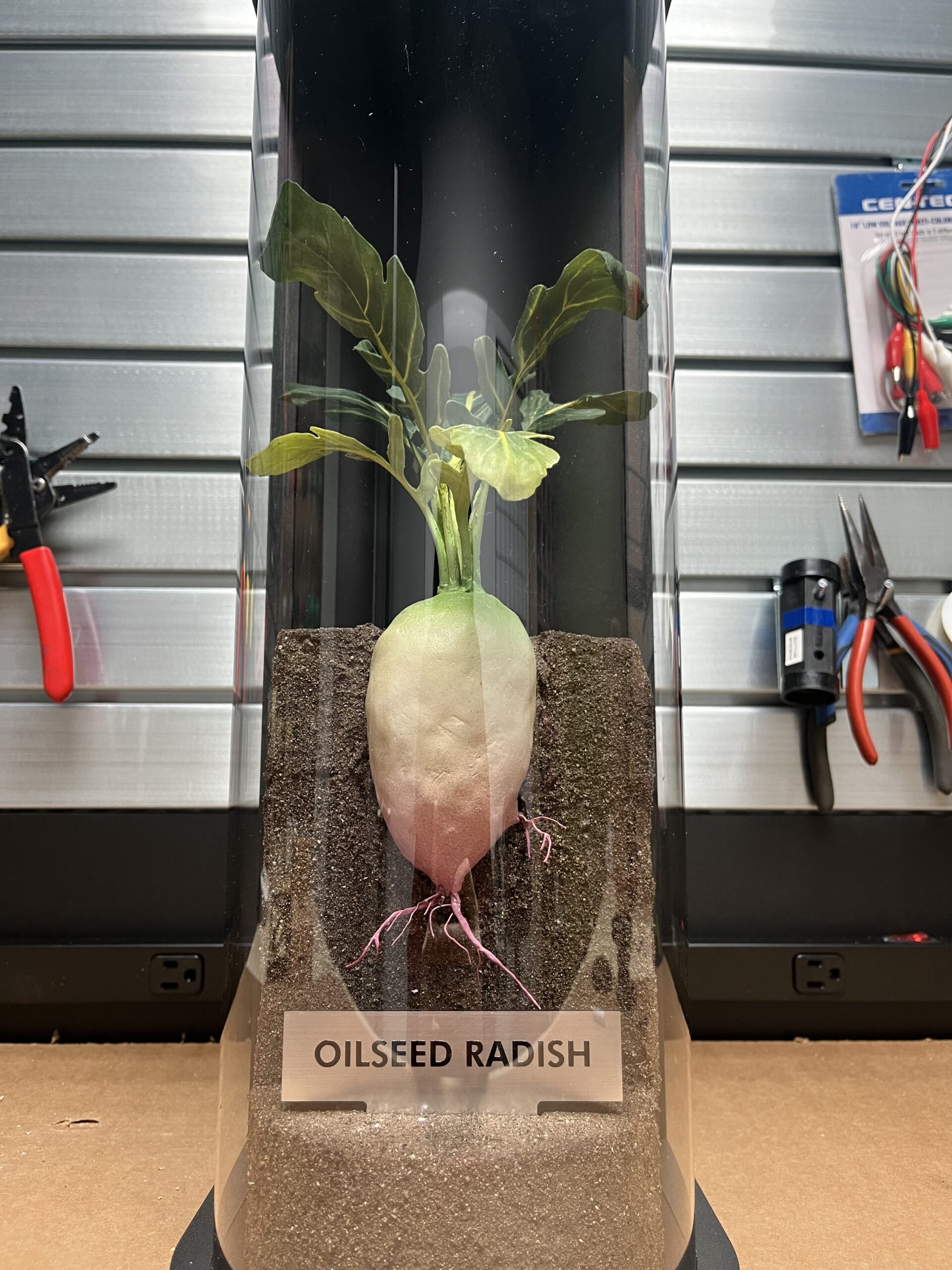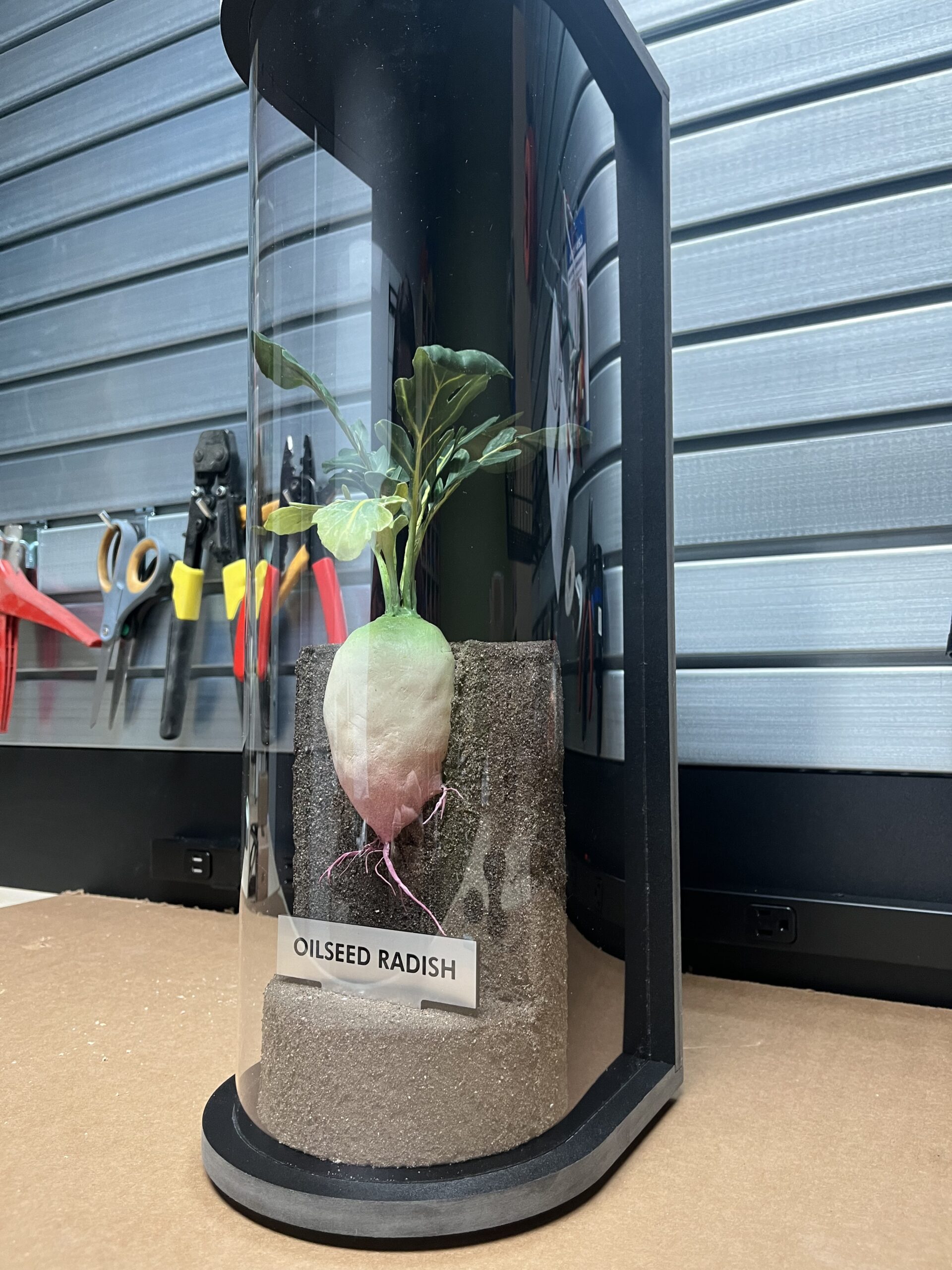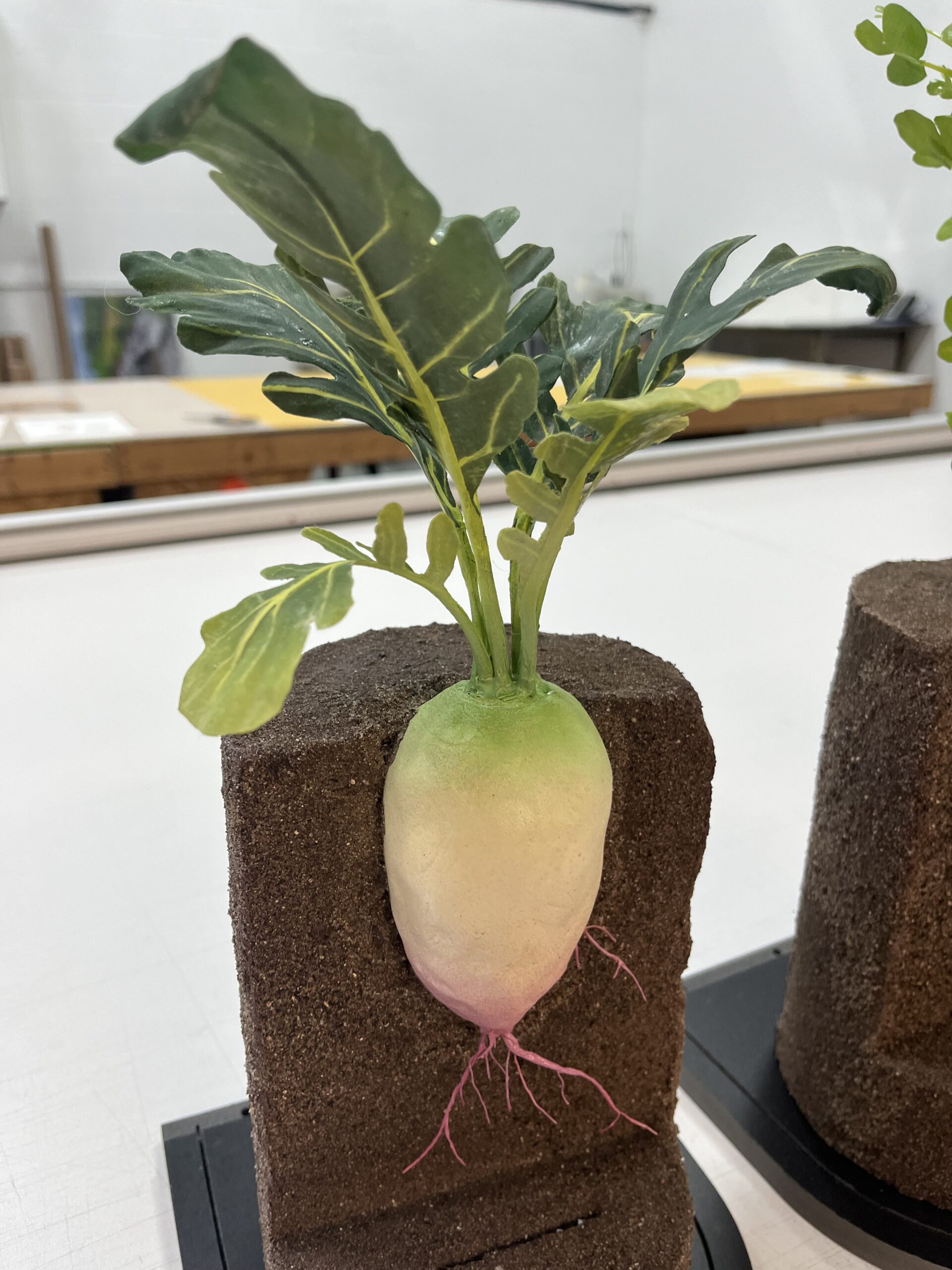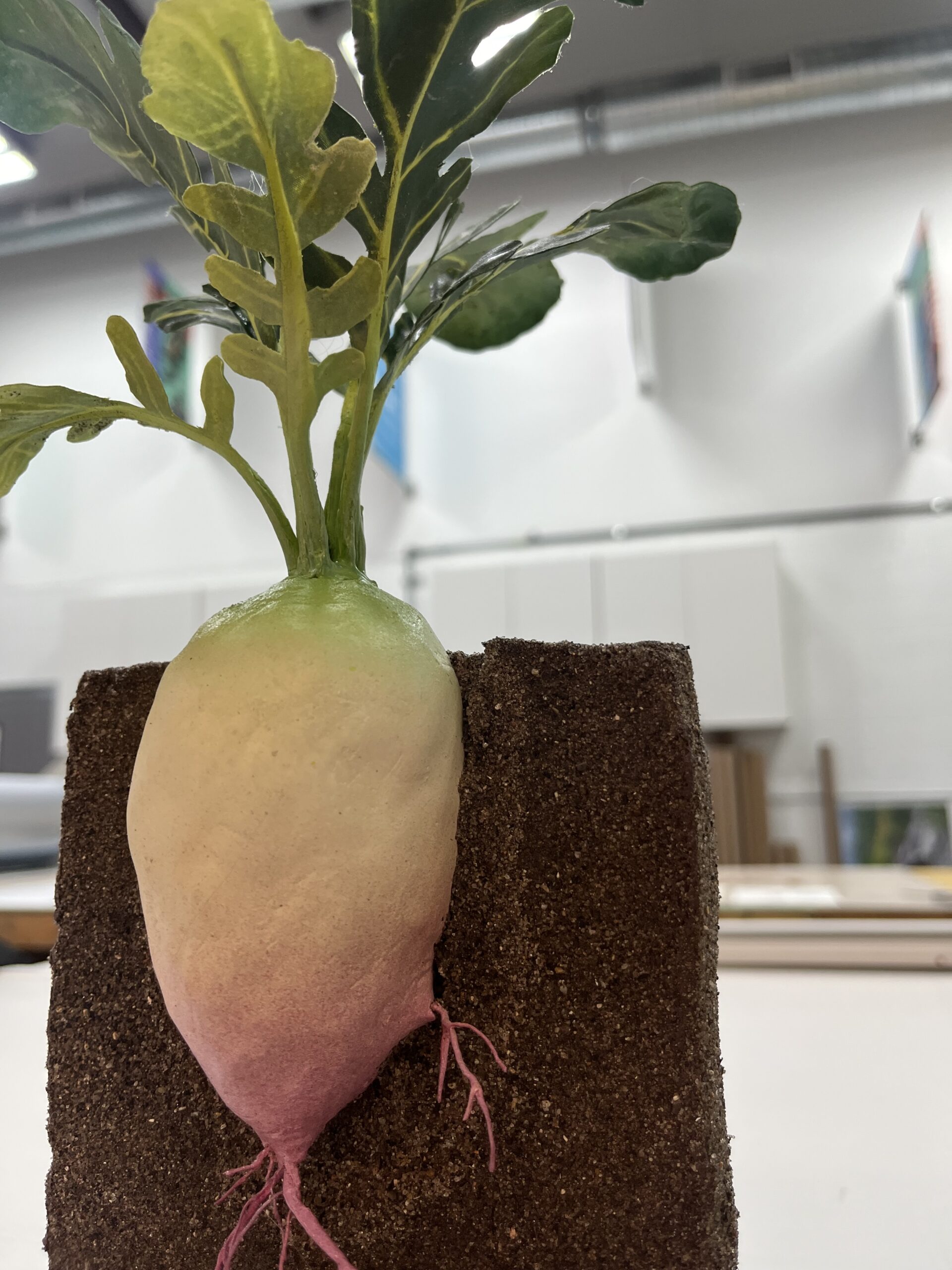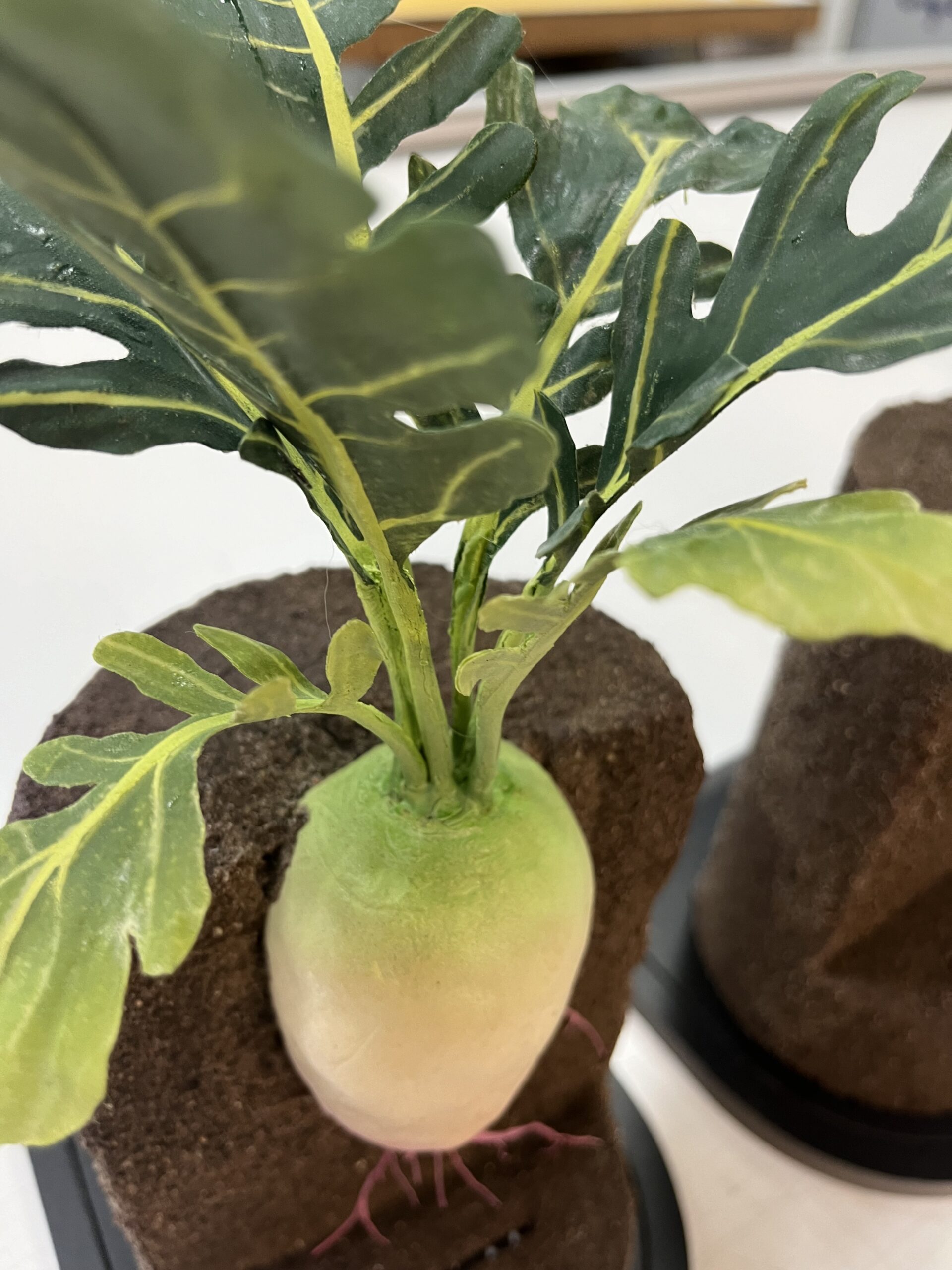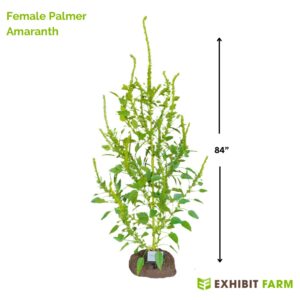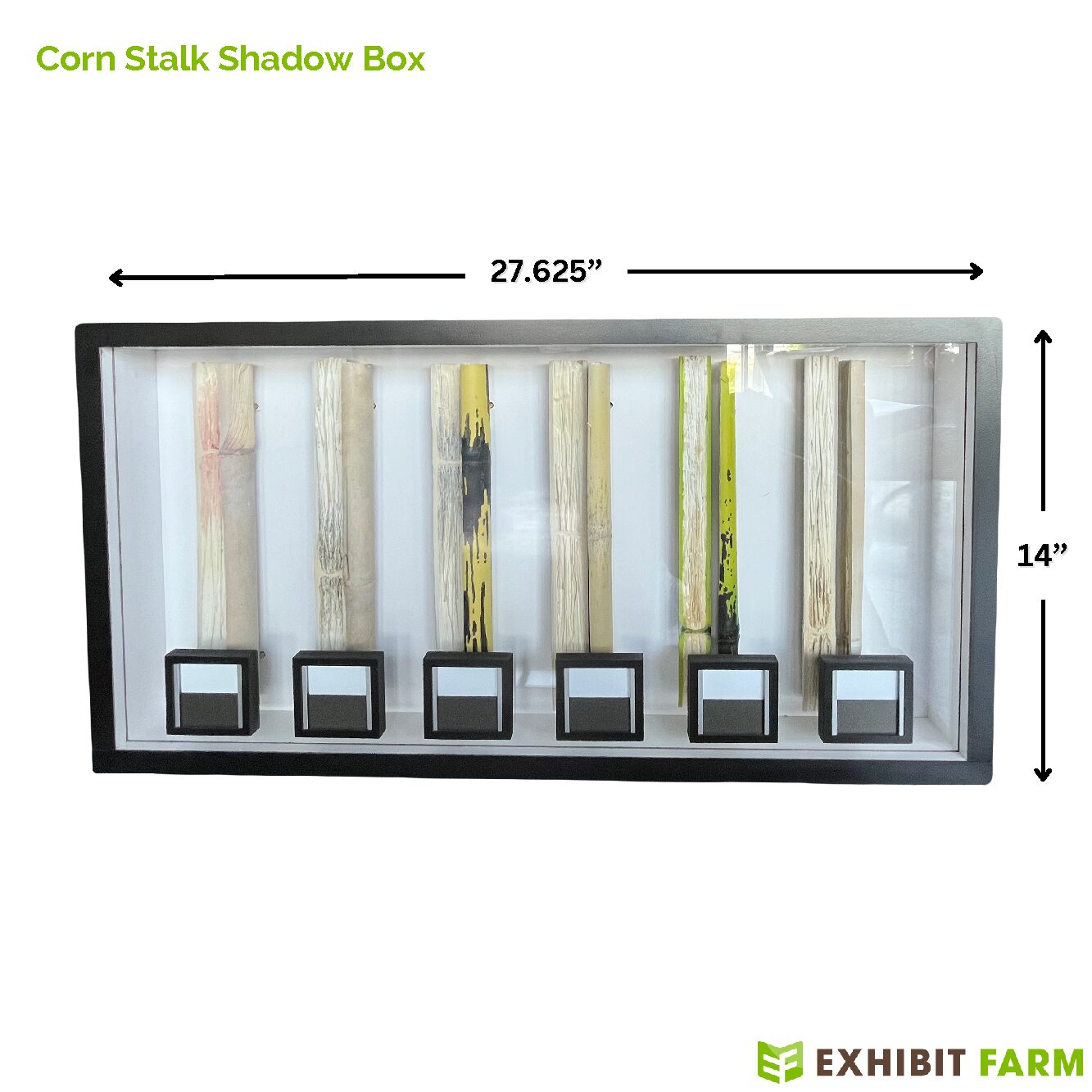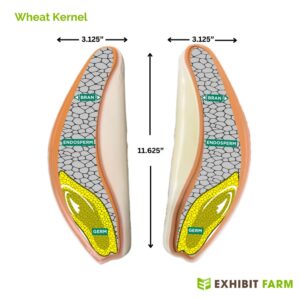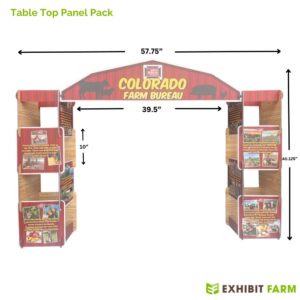Description
Our model features a cutaway to highlight the taproot of the oilseed radish. That taproot is one of the plant’s most useful features. Because it grows deep, it’s able to scavenge nitrogen from deeper in the soil than other crops. And because the taproot also grows pretty thick, it helps break up compacted soil. This improves soil health all on its own, and it also reduces the need for tilling. So it can help prevent erosion too! We designed our radish model to be as accurate as possible. Our craftsman carefully replicated the leaves and engineered a cutaway view of the taproot. And just to avoid any confusion, we provided an engraved label identifying the plant. It also summarizes how oilseed radishes can benefit a farm.
